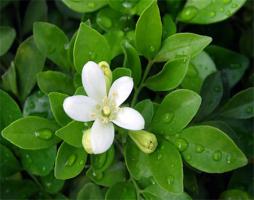How to Prepare Newly Planted Trees for Winter
Winter can be a harsh time for trees, especially for newly planted ones. When the temperature drops and the snow starts to fall, young trees can quickly become vulnerable to winter damage. However, with the right preparation, you can help your newly planted trees survive the winter and thrive in the spring. Here are some tips on how to prepare newly planted trees for winter:
1. Water the Trees
During the winter, trees can't absorb water from the ground as easily as they can in the warmer months. That's why it's important to water newly planted trees thoroughly in the fall before the ground freezes. This will help to ensure that the trees have enough moisture to get through the winter. Be sure to give the trees a good soaking, and make sure the soil around the roots is moist. Avoid getting water on the leaves or branches, as this could cause damage in freezing temperatures.
2. Mulch the Trees
Mulching is another important step in preparing newly planted trees for winter. A layer of mulch around the base of the tree helps to insulate the roots and keep them warm. Mulch also helps to retain moisture in the soil, which is especially important during the winter months. Use a natural mulch, such as wood chips or shredded leaves, and apply a layer of two to three inches around the base of the tree.
3. Protect the Trunks
The trunks of young trees are especially vulnerable to winter damage. To protect them, wrap the trunks with a tree wrap or burlap. This will help to insulate the tree from the cold and prevent sunscald, which can occur when the bark cells expand and contract too much in fluctuating temperatures. Make sure to remove the wrap in the spring, as leaving it on too long can cause damage to the tree.
4. Prune the Trees
Pruning is an important step in preparing newly planted trees for winter. It helps to remove dead or damaged branches, which can be more susceptible to breaking under heavy snow or ice. Pruning also helps to promote healthy growth, which will help the tree to better withstand winter conditions. Be careful not to prune too much, however, as this can weaken the tree and make it more vulnerable to cold weather.
5. Monitor the Trees
Monitoring your newly planted trees throughout the winter is important to ensure that they are staying healthy. Check the soil regularly to make sure it is staying moist, but not too wet. If you notice any signs of stress or damage, such as wilting or cracked bark, take action immediately to address the problem.
By following these tips on how to prepare newly planted trees for winter, you can help your trees survive the harsh conditions and emerge strong and healthy in the spring. With proper care, your trees will thrive for years to come.

 how many times do yo...
how many times do yo... how many planted tre...
how many planted tre... how many pine trees ...
how many pine trees ... how many pecan trees...
how many pecan trees... how many plants comp...
how many plants comp... how many plants can ...
how many plants can ... how many plants and ...
how many plants and ... how many pepper plan...
how many pepper plan...






























